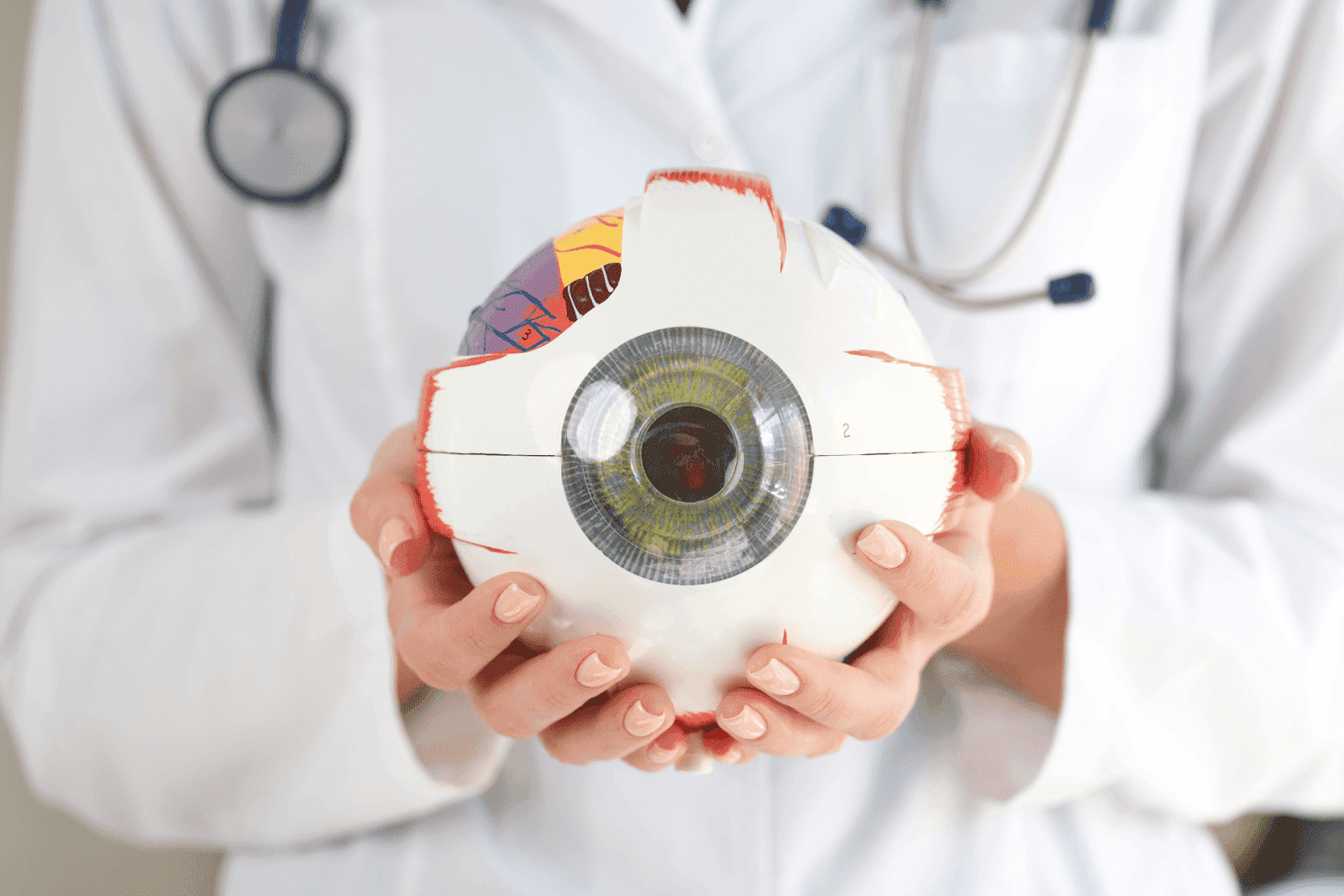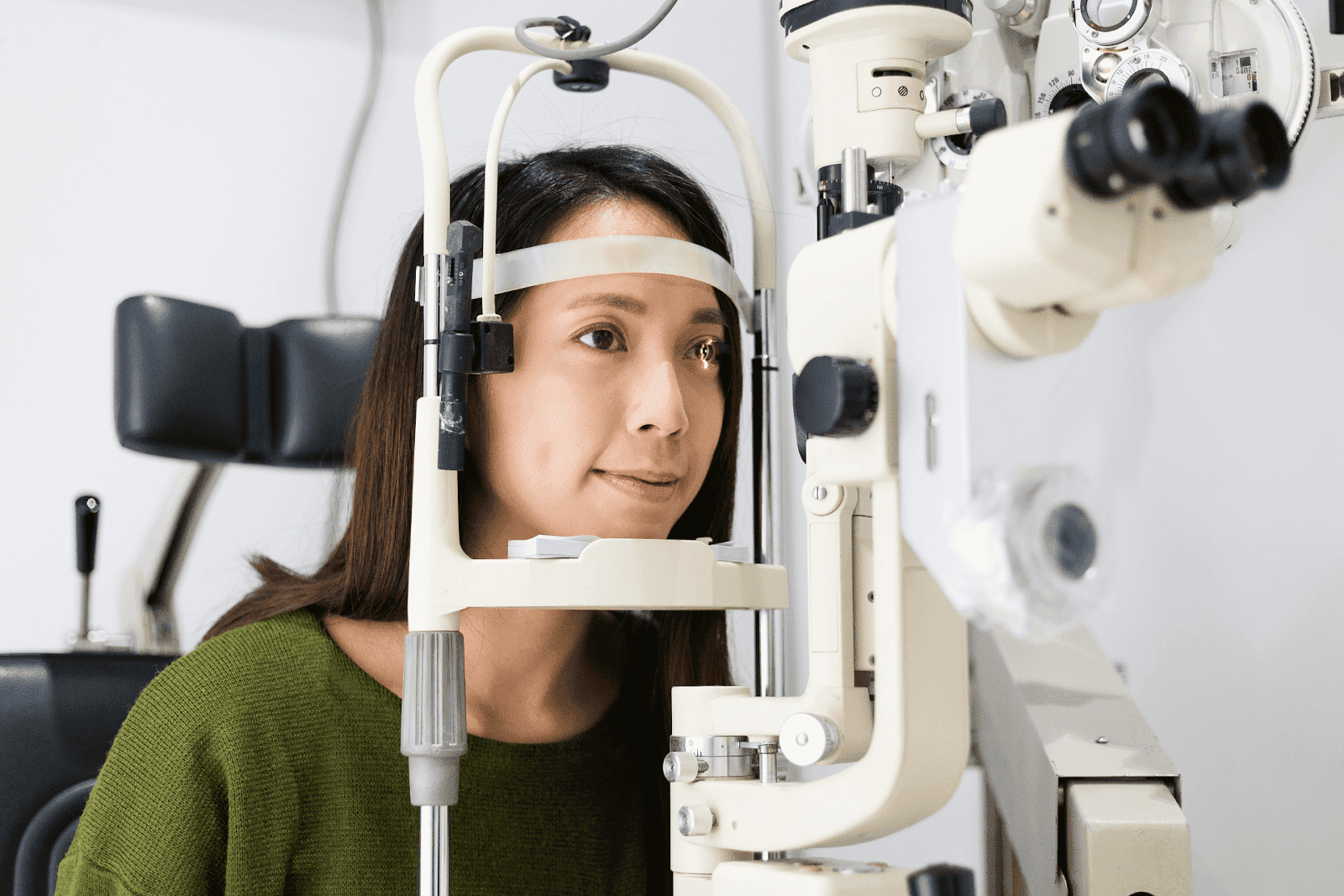Does Mounjaro Affect Fertility?
Understanding Mounjaro and Its UsesMounjaro is a prescription medication commonly prescribed for managing type 2 diabetes. It belongs to a class of drugs that help regulate [...]
Read More
Medically reviewed by Alan Lucks | MD, Alan Lucks MDPC Private Practice - New York on August 16th, 2025.
Our eyes are among the most vital organs, providing us with the ability to experience the world in vivid detail. Yet, many people overlook the importance of regular eye health checks until they experience noticeable problems. Early detection of eye issues can prevent serious complications and preserve vision for years to come. Fortunately, with advancements in technology and telehealth, it’s now easier than ever to monitor your eye health from the comfort of your home.
Vision problems can affect anyone at any age. According to the World Health Organization, at least 2.2 billion people globally have a vision impairment or blindness, and nearly half of these cases could have been prevented or have yet to be addressed. Common eye conditions like glaucoma, cataracts, macular degeneration, and diabetic retinopathy often develop gradually and silently, making early detection crucial.
Ignoring subtle symptoms such as blurred vision, eye strain, frequent headaches, or difficulty seeing at night can lead to irreversible damage. Regular eye exams are the best way to catch these issues early, but many people find it challenging to schedule appointments due to time constraints, cost, or accessibility. The barriers to accessing eye care can be particularly pronounced in underserved communities, where healthcare resources are limited, and awareness of eye health may not be prioritized. This highlights the need for community outreach and education to ensure that everyone understands the importance of maintaining their eye health.
 The Importance of Early Detection
The Importance of Early DetectionEarly diagnosis of eye conditions can significantly improve treatment outcomes. For example, glaucoma, often called the “silent thief of sight,” typically shows no symptoms until advanced stages. Detecting it early through routine screening can prevent vision loss. Similarly, diabetic retinopathy can be managed effectively if caught early, reducing the risk of blindness. Furthermore, conditions like age-related macular degeneration can benefit from early intervention, which may include lifestyle changes, dietary adjustments, and medical treatments that can slow disease progression.
Because many eye diseases progress without obvious symptoms, a simple and regular self-check can be a valuable tool to identify potential problems before they worsen. Techniques such as the Amsler grid test, which helps monitor changes in central vision, can be easily performed at home. Additionally, maintaining a healthy lifestyle—such as eating a balanced diet rich in antioxidants, staying physically active, and protecting your eyes from harmful UV rays—can also play a significant role in preserving vision. Awareness and proactive measures are essential in the fight against preventable vision loss, emphasizing the need for ongoing education about eye health in schools, workplaces, and community centers.
While nothing replaces a professional eye exam, there are straightforward methods you can use at home to monitor your vision and eye health. These checks can alert you to changes that warrant a visit to an eye care specialist. Regularly assessing your eye health can empower you to take proactive steps in maintaining your vision, and understanding these simple tests can make a significant difference in early detection of potential issues.
The Amsler Grid is a simple square grid with a dot in the center, used to detect problems with the macula, the central part of the retina responsible for sharp vision. To perform this test:
Wear your reading glasses if you use them.
Hold the grid about 12 to 15 inches from your face.
Focus on the dot in the center with one eye at a time, covering the other eye.
Notice if any lines appear wavy, blurred, or if there are missing areas on the grid.
If you observe any distortions or blank spots, it could indicate macular degeneration or other retinal issues, and you should seek professional evaluation promptly. It's important to note that the Amsler Grid test is particularly beneficial for individuals at risk of age-related macular degeneration, as early detection can lead to more effective management of the condition. Keeping a record of your Amsler Grid results over time can also help track any changes in your vision.
You can perform a basic visual acuity test at home using printed eye charts available online or apps designed for vision testing. This test helps determine how clearly you can see at various distances. To do this:
Print a Snellen eye chart or download a reliable vision test app.
Place the chart on a wall at eye level, about 10 feet away.
Cover one eye and read the smallest line of letters you can see clearly.
Repeat with the other eye.
Significant difficulty reading the chart or a sudden change in your ability to see clearly may indicate the need for a comprehensive eye exam. Additionally, performing this test regularly can help you notice gradual changes in your vision, which is crucial for conditions like nearsightedness or farsightedness. If you find that your vision fluctuates significantly, it may also be beneficial to consider factors such as screen time and lighting conditions, as these can impact visual clarity.
Pay attention to any new or worsening symptoms such as:
Double vision or sudden vision loss
Eye pain or redness
Flashes of light or floating spots
Difficulty adjusting to light changes
These symptoms could signal serious conditions requiring immediate medical attention. In addition to these warning signs, consider keeping a journal of your eye health, noting any changes in your vision, discomfort, or unusual symptoms. This record can be invaluable during your next visit to an eye care professional, providing them with insights that may help in diagnosing any underlying issues. Being proactive about your eye health not only helps in early detection but also fosters a deeper understanding of how lifestyle choices, such as diet and screen time, can influence your overall vision.
Accessing eye care professionals can sometimes be challenging due to scheduling, location, or cost barriers. This is where telehealth services, especially those powered by artificial intelligence, are transforming the landscape of healthcare, including eye care.
One standout service is Doctronic.ai, an AI-driven platform that provides fast, smart, and personalized medical consultations directly to patients. While Doctronic does not replace the need for in-person eye exams for certain conditions, it offers an excellent starting point for those experiencing eye-related concerns.
Doctronic’s AI doctor synthesizes the latest peer-reviewed medical research to provide comprehensive answers and treatment recommendations within seconds. This service allows users to:
Get immediate insights about eye symptoms and potential causes
Receive guidance on whether urgent in-person care is necessary
Obtain a second opinion to complement existing medical advice
Access affordable telehealth video visits with licensed doctors 24/7 across all 50 states for more personalized care
With over 10 million users so far, Doctronic is revolutionizing how people access primary care, including eye health consultations, by making it faster, smarter, and more personal. The AI remembers your medical history and preferences, ensuring continuity and tailored advice every time you visit.
For anyone worried about eye symptoms but unsure whether to visit an urgent care or specialist, starting with a free AI doctor visit at Doctronic.ai can be a convenient and reassuring first step.
While home checks and telehealth can be incredibly useful, they are not substitutes for comprehensive eye exams conducted by ophthalmologists or optometrists. It’s important to schedule regular eye exams, especially if you are over 40, have a family history of eye disease, or suffer from chronic conditions like diabetes or hypertension.
Seek immediate professional care if you experience:
Sudden vision loss or severe eye pain
Persistent flashes of light or floaters
Double vision or significant changes in vision
Eye injury or trauma
These symptoms may indicate emergencies that require prompt treatment to prevent permanent damage.
During a comprehensive eye exam, professionals will assess your visual acuity, check for refractive errors, examine the retina and optic nerve, measure intraocular pressure, and evaluate overall eye health. Early detection through these exams can identify conditions before symptoms appear.
 Maintaining Healthy Eyes: Tips Beyond Testing
Maintaining Healthy Eyes: Tips Beyond TestingGood eye health is supported not only by regular check-ups but also by healthy lifestyle choices. Here are some practical tips to keep your eyes in top shape:
Protect your eyes from UV rays: Wear sunglasses that block 100% of UVA and UVB rays when outdoors.
Maintain a balanced diet: Nutrients like omega-3 fatty acids, lutein, and vitamins C and E support eye health.
Practice good screen habits: Follow the 20-20-20 rule—every 20 minutes, look at something 20 feet away for 20 seconds to reduce eye strain.
Avoid smoking: Smoking increases the risk of eye diseases such as cataracts and macular degeneration.
Manage chronic conditions: Keep diabetes and blood pressure under control to prevent related eye complications.
Your vision is precious, and taking proactive steps to monitor and maintain your eye health can make a significant difference. Simple at-home checks like the Amsler Grid and visual acuity tests can alert you to potential issues early. When combined with the convenience and cutting-edge technology of AI-powered telehealth platforms like Doctronic.ai, getting timely and personalized medical advice has never been easier.
Remember, while AI and home tests are valuable tools, they complement rather than replace professional eye care. Regular comprehensive exams remain essential for preserving your sight. If you notice any troubling symptoms or changes in your vision, don’t hesitate to seek expert help promptly.
By staying informed, vigilant, and utilizing modern resources, you can protect your eyes and enjoy clear vision for years to come.
Don't wait for eye issues to become a bigger problem. Take control of your vision health today with Doctronic, the #1 AI Doctor. Experience the fastest, smartest, and most personal care available, all from the comfort of your home. With our free AI doctor visits, you'll receive immediate, accurate health insights and treatment recommendations based on the latest medical research. And if you need more, our affordable telehealth video visits with licensed doctors are available 24/7 across all 50 states. Join over 10 million satisfied users and talk to an AI Doctor now, for free. Your eyes—and our AI—will thank you.
Regular self-screening with simple tests like the Amsler Grid, combined with annual comprehensive exams after age 40, catches vision-threatening conditions before irreversible damage occurs. Don't ignore sudden changes in vision, persistent floaters, or eye pain—these warrant immediate evaluation. If you're experiencing concerning visual symptoms or need guidance on screening, Doctronic can connect you with expert care quickly.
Understanding Mounjaro and Its UsesMounjaro is a prescription medication commonly prescribed for managing type 2 diabetes. It belongs to a class of drugs that help regulate [...]
Read MoreUnderstanding Hydrocortisone Uses and DosagesHydrocortisone is a versatile medication primarily used to reduce inflammation and suppress the immune system in various [...]
Read MoreUnderstanding Zepbound and MounjaroWhen managing type 2 diabetes, patients often face a variety of medication options. Zepbound and Mounjaro are two such options gaining [...]
Read More